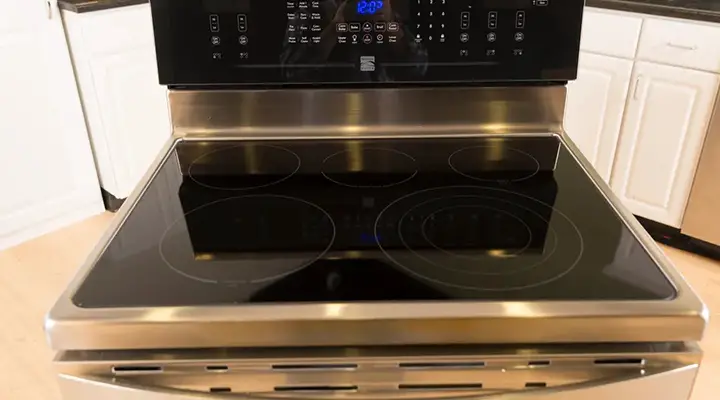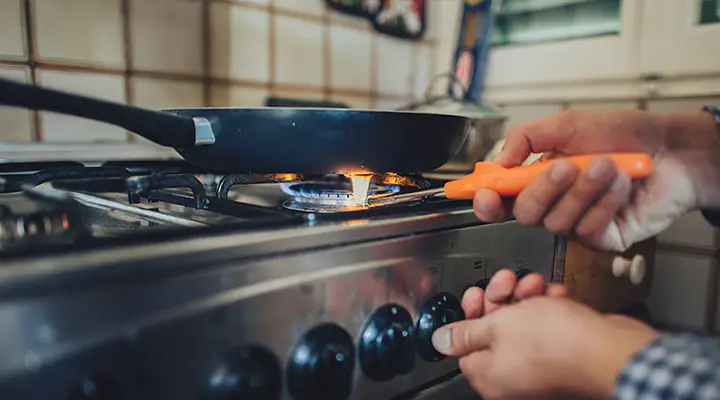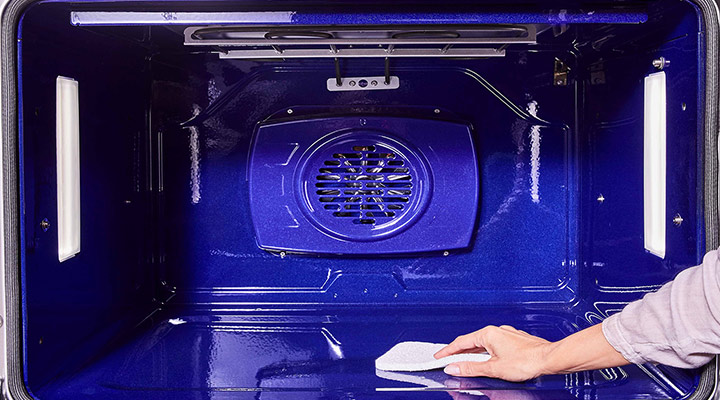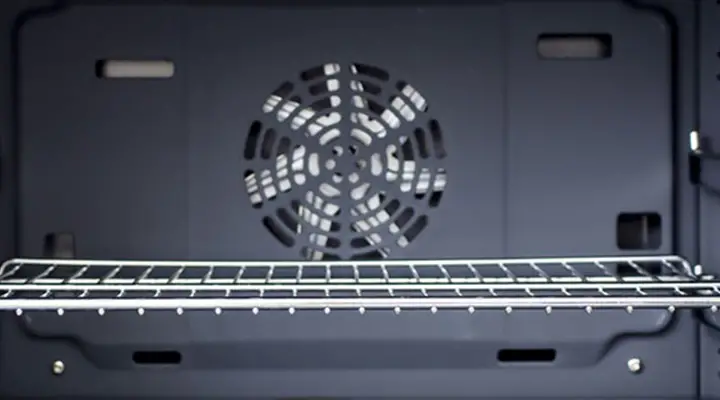Oven Popped and Sparked | Reasons and Solutions
A popping sound and sparking are very worrying if it occurs frequently on your electric oven. A lot of popping indicates an underlying issue that must be resolved, even though it is considered normal. Popping sounds can also be heard from electric ovens, gas range tops, boilers, and water heaters. Did you know there are many possible causes for this popping sound and sparking? In this article, we’ll look at possible causes and remedies for popping and sparking coming from a cooking oven.

How Come the Oven Spiked and Popped?
Reason 1: Short Circuit Due to Stuck Control Board Relay
You’ll find a component called the control board inside your electric oven. The control board contains several relays. These relays serve as the heart of your oven, as they control how and when power is provided to the heating elements and other components.
Here’s how it works. If you enter your settings into the oven’s control panel, what will happen? Once the control board relays open, the voltage to the heating elements is increased, causing the contents to become hot enough to cook. The relays will continue sending power to the heating elements for the duration you have set. When the duration has passed, the relays will cease powering the elements. During the cooling process, your food will not overcook or burn because the elements will cool.
The Reasons for Its Failure:
It may seem like a small relay, but the control board itself can cause major issues for your oven. As a result, it is possible for a relay to become stuck closed by overheating and welding the contacts together due to the high current flowing through it.
The oven may start to smoke or smell like a burning mess as a result of the short circuit. You may hear a pop when one, or more, of the components on the control board, are shorted out by the stuck relay.
Wires that have been shorted and burned out could also cause this problem. Circuit breakers trip when they detect an overload on a circuit. A trip is made to interrupt power and avoid electrocutions or fires.
Here’s How You Fix It:
Changing the oven control board is the simplest solution for this issue. Most people may not be able to fix individual relays. Check your user manual before ordering parts and make sure you’re getting the right one. So that you can be confident that the control board you receive fits your oven, you should check its model number.
The control board needs to be replaced by you. To begin with, make sure your oven’s power supply is disconnected. Accessing the existing control board typically involves removing a panel. To locate yours, you should always refer to the user manual since the exact location may differ from oven to oven.
It will be clear when you see your control board that you’re on the right track. Various components and connectors are found on this small circuit board. Whenever you replace the connectors on the new circuit board, take a picture of the board as a reference.
Removing the control board requires disconnecting all wires and removing the screws. Next, reattach all the connectors as shown in the reference picture you took earlier.
Test the oven to ensure that everything works properly after replacing the panel you removed earlier.
Reason 2: Problem With the Bake Element
At least one or two heating elements can be seen inside an electric oven. Also known as ‘bake elements’, these are located at the top and bottom of the oven and provide even heating. By adjusting the oven’s controls, you will cause electricity to flow through the bake element, generating heat. If you set duration and temp, that will continue for however long you want.
You may replace your faulty bake element and enjoy evenly baked dishes!
The Reasons for Its Failure:
Having a bake element is problematic because it is prone to burning out. You may have heard that very loud pop coming from your oven in a blink of an eye.
As a result, if the bake element burns out, the circuit breaker could trip as a precautionary measure. An electrocution injury or house fire can be prevented by the breaker doing this.
An oven that emits smoke and a burnt smell is another sign of a burnt-out bake element. You can also check this by looking at burn marks on the baking element.
Here’s How You Fix It:
It is relatively easy to fix this issue. For starters, you must refer to the user manual or search online for the right replacement part for your oven’s specific model and maker.
Therefore, you won’t end up purchasing the wrong part. You should always turn off the oven’s power supply before you replace it yourself. If the mounting plate and any screws holding the bake element in place need to be removed, remove them.
The bake element can then be disconnected once that has been completed. You will need to disconnect the element at both points since it’s connected in two places.
Reinstall the mounting plate and screws after connecting the new element. Once the new element is in place, you can turn on the oven to verify it is working properly.
Reason 3: Short Circuit Caused by an Exposed Wire
An internal wire runs through the bake element. Heat is generated by the wire inside the heating element as electricity passes through it. If an oven provides more power to the bake element, more heat is generated to cook whatever food is in the oven.
In the event that you touch bare wires inside a heating element, you could harm yourself or worse, get electrocuted. Therefore, this is contained within the baking element.
The Reasons for Its Failure:
It is possible to expose the wire inside the bake element in some cases. The reason that this might happen may be due to a poor-quality bake element, or a hard knock that breaks the outer layer and exposes the wires.
Inside the bake element is a live electrical wire. Short circuits could occur if it’s exposed and contacts other parts of the oven. You might hear a loud pop in the oven because of that.
Thanks to the bake element, it is usually easy to locate an exposed wire. The circuit breaker will trip if it senses the oven is drawing a greater electrical load than it should (because there is a short circuit at the oven’s bake element). By doing this, it prevents electricity from flowing and causing problems such as fires and electrocutions.
Here’s How You Fix It:
To fix this problem, the bake element simply needs to be replaced. After all, fixing a broken heating element, especially if the wire is exposed, is a much more practical solution.
Even though it’s always best to have the system serviced by a qualified technician, you can carry out the replacement yourself since it’s quite simple.
However, since this involves an exposed wire, extreme caution must be exercised. Please disconnect the power source from the oven before you do anything else.
If you have rubber-insulated gloves, you should also wear them. There’s no such thing as being ‘too’ cautious. Removing the mounting plate and any screws that are holding the bake element into place is the next step.
This step requires a screwdriver. Disconnect the baking element once those are removed. You need to disconnect the element at both ends since it is connected in two places.
Attach the screws and mounting plate and install the new bake element. Ensure that the new bake element is working by re-connecting the oven to its power supply and testing it.
Frequently Asked Questions
What Happens When Your Oven Pops?
When the oven is on, you can hear a fan running. To keep the electronics cool, the fan runs. When the metal is heated and cooled during cooking or cleaning processes, “cracking,” “popping,” and “oil canning” sounds may be heard.
What Causes an Electric Stove to Pop?
Burner cycles generate these sounds. When the oven is on the self-cleaning cycle, or the range is on, the fan motor will turn on. During this cycle, the fan will take care of the oven’s electronics. The electronics could get too hot and crack if there isn’t enough air circulation.
Can An Oven Element Catch Fire?
Two heating elements are usually found inside an electric oven. Two burners are located at the top and bottom of the oven, respectively. It is possible that a fire could start if the heating element doesn’t work properly. You should turn off your stove if you see sparks or flames coming from the heating element.
Conclusion
There are many reasons why electric ovens are popular, including their safety. Several safety features, in combination with the lack of gas, make users feel much safer. So, imagine how frightening it would be if your electric oven popped and caused the breakers to trip! Why might this happen? How dangerous is it really?
Yes, it’s a serious problem you’re facing. The range and breaker box probably have a bad connection. If anybody is sleeping in that house, they are in danger because they are living in a fire trap. The problems appear to be too complex to be fixed by you, so hire a professional to solve them. Between now and then, make sure all of your fire and carbon monoxide detectors are working properly and all exits are open.







